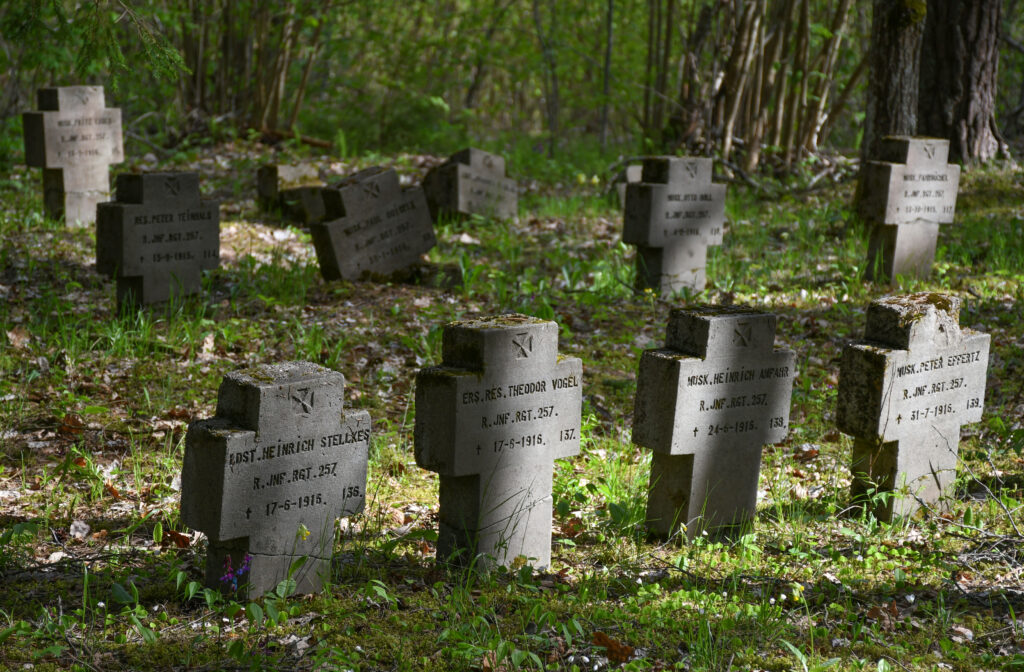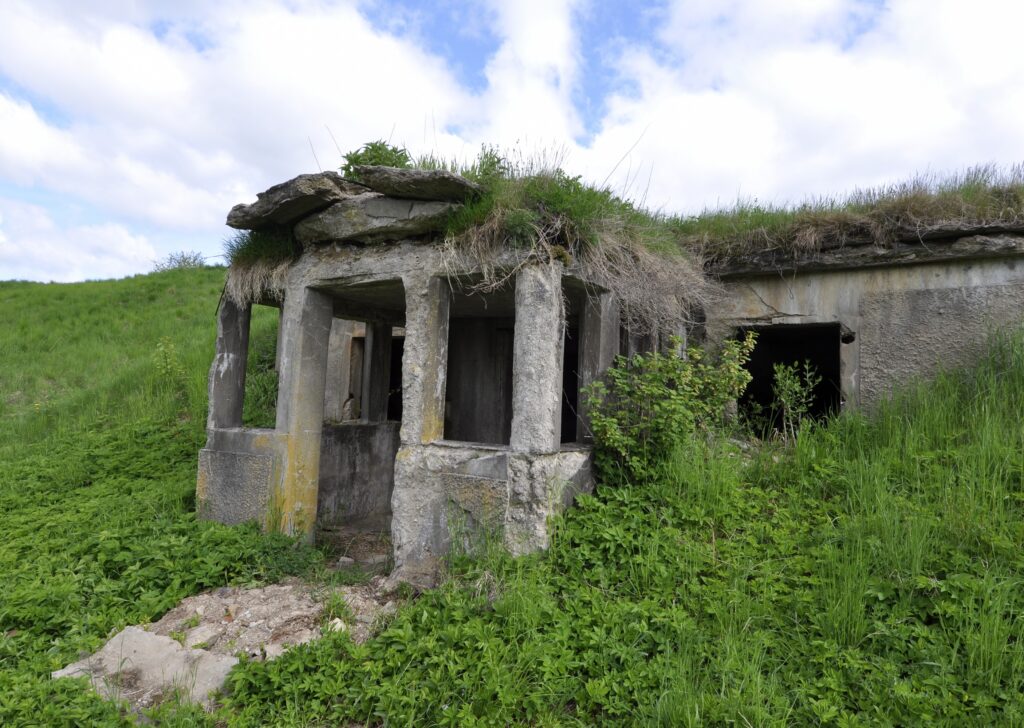The marked cross-border route that crosses the territory of Latvia and Lithuania is offered for your attention. During the First World War, the front line of “Life and Death” was located on the territory of Latvia and Lithuania for several years. A complex system of fortifications with ditches, trenches and bunkers was built on both sides of it. Thousands of soldiers fought and died in fierce battles here, as evidenced by the countless burials of fallen soldiers. During the route No. 790, it is possible to see several better-preserved bunkers, as well as the expositions of the First World War in Medumi and Turmantas (Lithuania), dedicated to the First World War. World War I was a global armed conflict between the Allies, led by the Entente on one side, and the Central Powers on the other, which lasted from 1914 to 1918. During the First World War, at least 230 soldiers died every hour.
Adjacent bunkers were artillery battery positions. The head of the artillery of the 77th Reserve Division was colonel Racenstein, who lived in Smelina. He commanded two reserve artillery regiments, each regiment had 6 artillery batteries of four cannons, totally 48 field cannons and 12 heavy field howitzers. Artillery positions were taken up on hills where homestead settlements were usually located. Most often, batteries were hidden in homestead settlements or in positions near them, in barns and stalls. The division’s artillery was initially placed between the forward and reserve lines, later placed along the defensive lines. For the artillery positions, it was very important that the observers could be protected by the infantry positions and could be able to retreat if necessary. The batteries would have to be placed at such a distance that it could help an infantry, but cannons would not be in the strike zone of the artillery firing on the forward positions. Cannons had to be placed in convenient firing positions next to well-covered ammunition hiding places with shelters for soldiers. Artillery reserve had to have good access roads. Work in these positions was particularly dangerous.
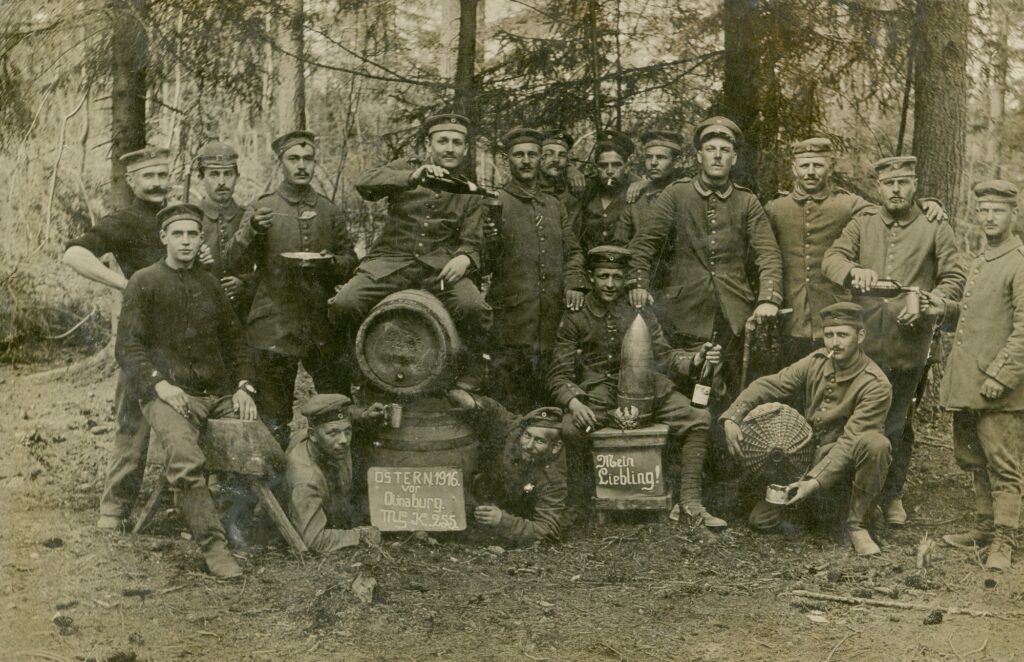
Photo from the collection of J. Stikans
The German artillerymen, who lived in the area, did not know the original name of the homestead settlement, so they named the area after the artillery battery commander Willi, adding the local suffix “-iski” (“-iški”) – it turned “Williski” (“Williški”).
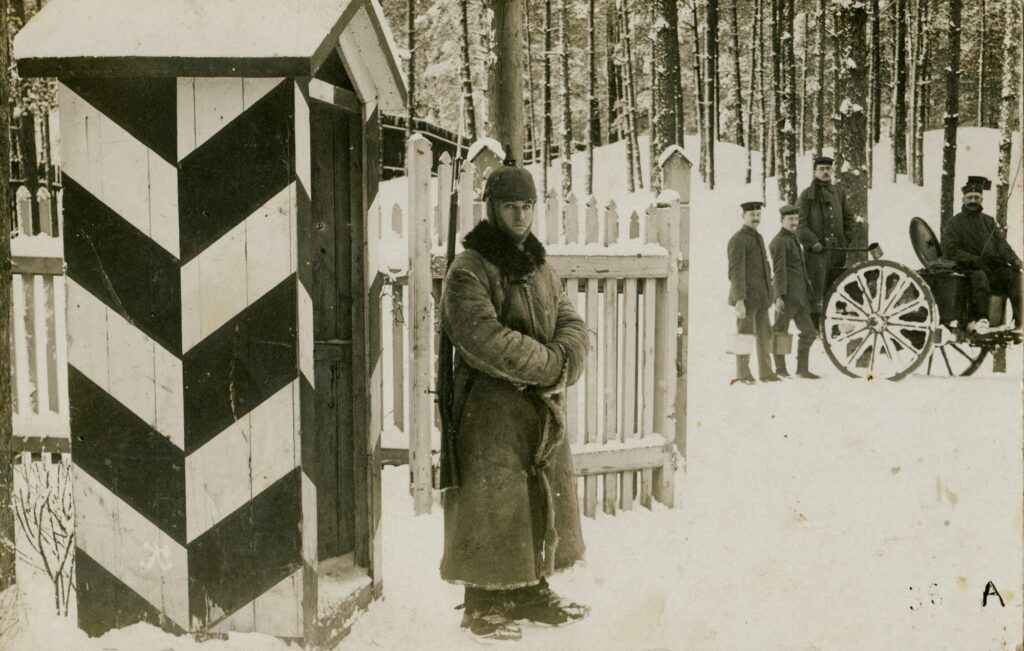
Photo from the collection of J. Stikans
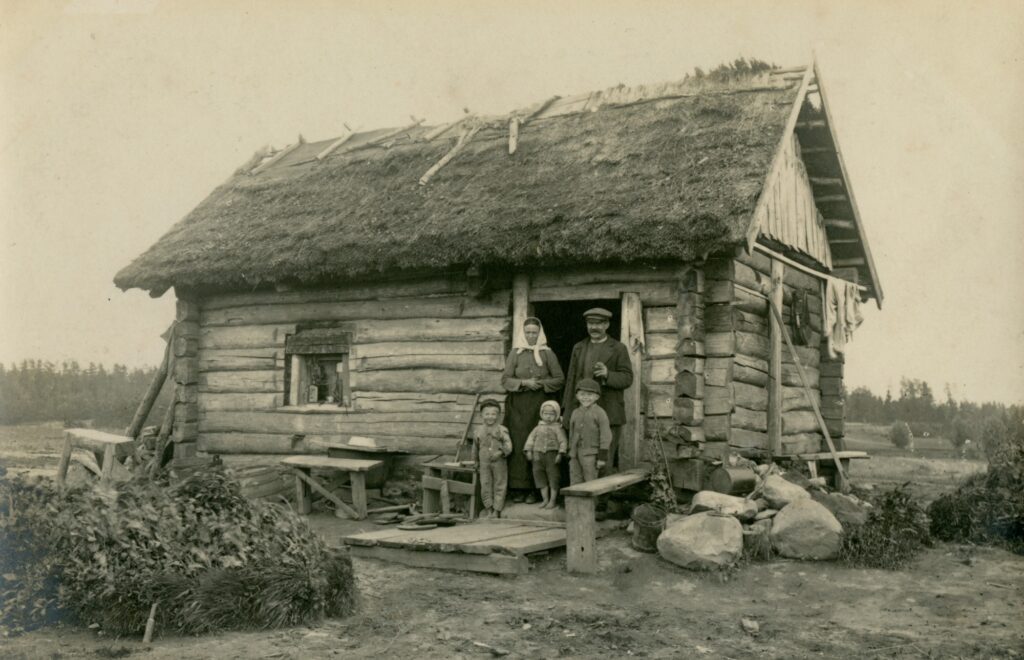
Photo from the collection of J. Stikans
